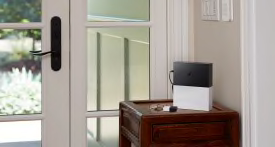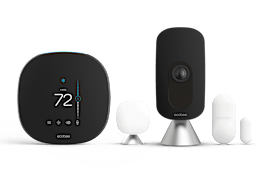
Home Security System Buying Guide
Purchasing a home security system once required having a technician come into your house, punch holes in your walls and snake wires to every door and window sensor. But today’s systems are wireless—and much easier to install.
That means traditional security companies have had to adapt as they face a wave of tech-savvy do-it-yourself competitors, such as Abode, Amazon-owned Ring, Cove, Eufy, SimpliSafe, Vivint, and Wyze. For example, professional security stalwart ADT acquired DIY security company LifeShield in early 2019 and rebranded it as its own DIY offering, called Blue by ADT. The company then partnered with Google in 2020 and integrated its security offerings with Google’s Nest smart home products. Later that year, Google discontinued its own Nest Secure DIY system.
What does all this upheaval in the industry mean for you? Lower prices and more choice as manufacturers seek to beat the competition. According to a 2021 report from market research firm Mintel, 29 percent of U.S. consumers are interested in owning a smart security system. That’s compared with 21 percent who are interested in owning smart speakers—currently one of the most popular categories of smart home products.
Many home security systems now double as smart home hubs, centralizing controls for lights, thermostats, locks, and more within one app on your smartphone. And because a lot of the systems on the market now are DIY, you can install them—and even monitor your home—yourself.
DIY security systems are generally sold as starter kits to which you can add more components and sensors à la carte. This makes it tough to comparison shop. In this guide, Consumer Reports will break down everything you need to know when choosing a wireless security system for your home, regardless of whether you go with a professionally installed system or take the DIY route.
How We Test DIY Home Security Systems
Because of the complex nature of DIY home security systems, Consumer Reports’ test engineers have spent a lot of time fine-tuning our test methodology. We rate each system for security essentials, security add-ons, smart home add-ons, ease of use, ease of setup, and motion detection. Our ratings also note flexibility of professional monitoring options (where an alarm center dispatcher responds to triggered alarms 24/7 year-round), whether systems offer two-factor authentication to prevent unauthorized access, and more.
For security essentials, our test engineers evaluate each system for features and functionality that Consumer Reports believes every system should provide. That includes motion sensors, contact sensors for doors and windows, key fobs, keypads, remote sirens, and smartphone apps.
Next, our testers assess security add-ons. These are features that offer extra forms of protection, such as panic buttons and pendants, as well as security cameras that trigger the alarm with motion detection.
Because many security systems now double as smart home systems, we also examine their add-on smart home features—namely, their ability to integrate compatible smoke/carbon monoxide detectors, water and temperature sensors, thermostats, and lighting.
Our ease-of-use test looks at how easily you can interact with the systems through apps and keypads. The evaluation includes checking for features like the ability to adjust the sensitivity of motion sensors, as well as the ability to use geofencing (which can tell when you leave and return home using your phone’s location data) to arm and disarm the system automatically. We also judge how difficult it is to set up each system.
Finally, for motion detection, our test engineers challenge the sensors with various forms of movement, such as crawling or walking slowly past them.
In addition to our performance tests, digital privacy and security testers at CR’s Digital Lab evaluate the systems for data privacy, data security, and resistance to two types of hacking vulnerabilities—jamming and replay disarm signal attacks.
Jamming attacks involve a burglar using a laptop and a portable radio frequency (RF) transceiver to block the signals from door/window or motion sensors and enter a home without triggering the alarm. (Note: Any wireless device can be jammed, but there are methods and technologies that, when implemented, can make it harder to pull off.)
Replay disarm signal attacks involve a hacker capturing and recording the disarm signal from a key fob and later broadcasting it to disarm the security system, also using a laptop and an RF transceiver.
Our Digital Lab testers attempt these attacks on all the systems to see whether they’re vulnerable and determine which safeguards they have in place. These attacks are quite rare, but they’re possible, and some systems stand up to them better than others.
For our data privacy and data security tests, we evaluate each brand’s public documentation, such as privacy policies and terms of service, to see what claims the manufacturer makes about the way it handles your data. The tests include inspection of the user interface and network traffic from each system and its companion smartphone app to make sure it’s using encryption, adhering to manufacturer policies, and not sharing your data with irrelevant third parties.
Our test engineers take the results from all these individual tests and use them to calculate an Overall Score for every system that enters our labs.
Latest Trends
Over the past few years, the market for DIY home security systems has seen a wave of new entrants, including Cove, Eufy, Kangaroo, Ring, and Wyze. Security camera company Arlo is also joining the fray with its own security system sometime this year. There were even two offerings that came and went—systems made by Google Nest and Samsung SmartThings.
The ones that have remained have one thing in common: They all compete heavily on price. Cove, Eufy, and Ring all have starter kits that cost $200 or less. Kangaroo has a starter kit that costs $100, and Wyze has one that costs $50.
Most of these companies also offer very competitive professional monitoring plans. For example, Eufy and Kangaroo charge $100 per year for professional monitoring.
Ring and Wyze are bucking the trend for professional monitoring, though. Ring used to charge $100 per year for monitoring, but it doubled its prices in late 2021 in exchange for more features—such as backup home internet service—for its new Ring Alarm Pro system. (Notably, the system is also one of the first on the market to double as a mesh WiFi router.) Wyze used to charge $5 per month or $60 per year, but it raised its prices to $10 per month or $100 per year in April 2022. It’s too soon to tell whether these moves will spur competitors to increase their prices or offer similar features.
Aside from more options and generally lower prices, the other big trend in this space is tighter integration with other smart home products. For example, Amazon now offers a service for its smart speakers called Alexa Guard, which uses the speakers’ microphones to listen for the sounds of smoke alarms and glass breaking (as well as other signs of a possible break-in, if you’re willing to pay a monthly fee). Alexa Guard can integrate with security systems, such as those from Abode, ADT, Ring, and Scout Alarm, so you can forward these alerts to professional monitoring dispatchers.
More integrations similar to Alexa Guard are likely to be possible as the smart home industry adopts a communications standard called Matter. Through this standard, smart home devices from different manufacturers will be able to talk to each other without the need for partnership agreements between companies.
The standard already has support from about 250 companies, including ADT, Amazon, Apple, Arlo, Google, Resideo (maker of Honeywell Home), Samsung, SimpliSafe, Vivint, and Wyze. Matter-certified products are expected to enter the market in fall 2022.
Types of Home Security Systems
You should compare a DIY home security system with a professionally installed system to see which best fits your needs.
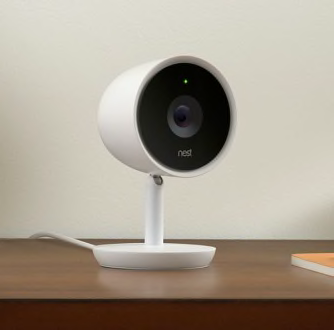
DIY Wireless Home Security Systems
These security systems come as packaged kits that you install yourself. Most let you self-monitor your system via a smartphone app at no cost, but a few require you to pay for professional monitoring. Many self-monitored systems offer optional professional monitoring that you can start (and cancel) whenever you like, such as when you go away on vacation.
Pros: Systems with optional professional monitoring give you more flexibility and usually have lower monthly monitoring fees than professionally installed systems. Most don’t require you to sign a multiyear contract. DIY systems are also easy to customize and expand over time with additional sensors and accessories.
Cons: You have to install the system yourself. Equipment costs might be higher if you aren’t signing a contract. And self-monitored systems are not monitored 24/7 by trained professionals—if you miss a smartphone alert at a critical moment, that could give an intruder time to enter your home.

Professionally Installed Home Security Systems
These security systems, installed by a technician, come with 24/7 professional monitoring. That means trained dispatchers at alarm-monitoring centers verify triggered alarms and alert the authorities. Many systems offer a smartphone app for remote control and monitoring, but some providers charge a higher monthly fee to use it. There is usually an up-front cost for equipment and installation, as well as a required multiyear contract with a recurring cost for monitoring. (Consumer Reports does not test these systems.)
Pros: Equipment might be significantly discounted, thanks to multiyear contracts. A technician sets up the system for you. Your system is always monitored by a professional.
Cons: Monthly fees are usually around $40 or more. You’re locked into a contract for multiple years.
Basic Security System Sensors and Components
Home security systems are made up of many individual sensors—battery-powered devices ranging in size from a pack of gum to a large box of matches—and other components, such as keypads and alarm sirens.
Here, we define the parts you will usually find in basic home security systems, arranged in order of their importance to the overall system. DIY security system kits usually include a base station, a keypad (or touch screen control panel), contact sensors, motion sensors, and key fobs.
• Base station: This acts as the brain of the security system, wirelessly connecting to all the sensors and components, and acting as a bridge between the individual components and the internet. This device usually includes a built-in siren and features backup batteries and backup cellular connectivity for power and/or internet outages.
• Contact sensors: These sensors attach to doors and windows to alert you (and/or authorities, if you have professional monitoring) when they’re opened or closed.
• Motion sensors: Great for rooms with multiple doors or windows, these sensors detect the movement of people. Some are calibrated so that pets won’t set them off.
• Keypad: With some systems, you’ll use a 10-digit keypad to enter access codes that arm and disarm the alarm. Some systems combine the keypad and base station into one device.
• Touch screen control panels: Similar to a small tablet, this could take the place of a keypad. On the panel, you can arm and disarm the system, enter access codes, and control other smart home devices.
• Key fobs and tags: Similar to the key fob for your car, these fobs have arm and disarm buttons, and some contain RF (radio frequency) tags, so you can tap the fob on the system’s keypad or base station to arm or disarm.
• Range extenders: Most base stations have a range of a few hundred feet. For larger homes, some systems utilize extenders to increase the wireless range of the base station and connect to more-remote sensors. In other systems, the wireless components (as well as range extenders) act as signal repeaters that further extend the base station’s range.
Add-On Sensors and Components
Most security systems also offer a variety of add-on sensors and components—at an additional cost—for other types of monitoring, such as personal safety, fire, and carbon monoxide. Here are the most common add-on components you’re likely to see as you shop.
• Security cameras: While not required, most systems work with wireless security cameras and video doorbells that allow you to see what’s going on at all times. They typically record footage when the alarm is triggered.
• Environmental sensors and alarms: Most systems work with environmental sensors and alarms to monitor your home for fire, water leaks, extreme temperatures, and more. These devices include smoke and carbon monoxide alarms, alarm listeners that listen for the sound of those alarms, and leak and freeze sensors.
• Sirens: Standalone sirens can be placed away from the base station. If you live in a larger home, you might consider installing multiple sirens.
• Glass-break sensors: These sensors can detect the sound of, for example, an intruder smashing a window to get inside.
• Garage-door-tilt sensors: Placed on the interior side of a garage door, these sensors can tell when the door is open or closed based on their horizontal or vertical orientation.
• Panic buttons and pendants: Physical panic buttons are a quick and easy way to alert a monitoring service that you need help. Panic pendants work the same way, except they can be worn by the user, making them useful for, say, an individual who’s at risk of falling.
Contracts for Professionally Installed Systems
Professionally installed security systems usually require that you sign a contract lasting two to five years. While contracts lock you into a security provider and commit you to a recurring monthly fee, they do have a few upsides.
“A three-year contract is a good way to guarantee that monthly fees won’t increase,” says Kirk MacDowell, president of home security consulting firm MacGuard Security Advisors. He adds that having a contract will help ensure that your system will be maintained and updated with the latest software.
Considerations for Self-Installed Security Systems
Professional Monitoring vs. Self-Monitoring
A big factor in your purchase—and the long-term cost of your system—is whether you want professional monitoring. With pro monitoring, a team of trained dispatchers will monitor your system 24/7 and alert the authorities, if necessary.
Self-monitoring means no monthly fees, but it also means that missing a notification on your smartphone can be the difference between being burglarized and thwarting a potential thief.
Many self-monitored systems offer optional professional monitoring, sometimes called on-demand monitoring. With these systems, you can sign up for professional monitoring indefinitely or temporarily, even for just one month.
A few DIY security systems require professional monitoring with a multiyear contract, but they are the minority. Other systems might offer optional multiyear contracts in exchange for lower monthly monitoring fees.
Additional Component Costs
Security system companies like to advertise that their systems start at just $200, $300, or $400. But the reality is that you could easily spend over $1,000 when you factor in the cost of the additional components you might want.
That base price usually includes only a handful of contact and motion sensors. One contact sensor for a DIY system, for example, could cost anywhere from $15 to $50. Depending on the model you choose, a security camera could cost between $35 and $200.
Other Factors to Keep in Mind As You Shop
What Do You Want to Monitor?
While all home security systems guard against burglary, consider whether you want additional forms of protection. You can set up a security system—using some of the sensors defined above—to alert you to fires, high levels of carbon monoxide, leaks and floods, and extreme temperatures. Some systems offer panic pendants you can wear and activate in the event of personal injury. Keep in mind that if you pay for professional monitoring, some providers might charge higher monthly rates for these additional features.
Smart Home Integrations
Many home security systems now double as smart home hubs, allowing you to automate and control connected locks, lights, thermostats, and more from a single app on your smartphone. And if you have other smart devices, the integrations can add convenience.
For example, some systems will automatically arm and disarm your alarm system when you lock and unlock a smart lock. Others will automate your home’s lighting to make it look like you’re home when you’re not.
Alarm Permits
Some municipalities require that anyone running their own security system with professional monitoring obtain a permit so that authorities have a record of all alarm systems in their jurisdictions.
Check with your police department to see whether it requires alarm permits and if there’s an associated fee. (Some fees are charged at the time you obtain the permit, and some are charged annually.) Yonkers, N.Y., where Consumer Reports is based, requires permits but does not charge residents a fee. Dallas, on the other hand, requires its residents to pay an annual fee of $50 for alarm permits.
Best Time to Buy a Security System
If you want a deal on a new security system, especially on a DIY one, the best time of year to buy is the holiday shopping season. That’s when we usually see the steepest discounts. Your next best bet to score a deal is around Amazon Prime Day during the summer.
Security System Features
Here are some common features you’ll see offered by almost all home security system providers, regardless of whether a professional installs the system or you do it yourself.
- 1
- / 6

e911
If you’re out of town and get an alert that your alarm is going off, you can use e911 to call the local 911 dispatcher for your home, regardless of your current physical location. (If you call 911 from your phone and you’re not at home, you’ll reach the dispatcher where you are—not the one in your hometown.) This could save valuable time at a critical moment.
PHOTO: ARLO
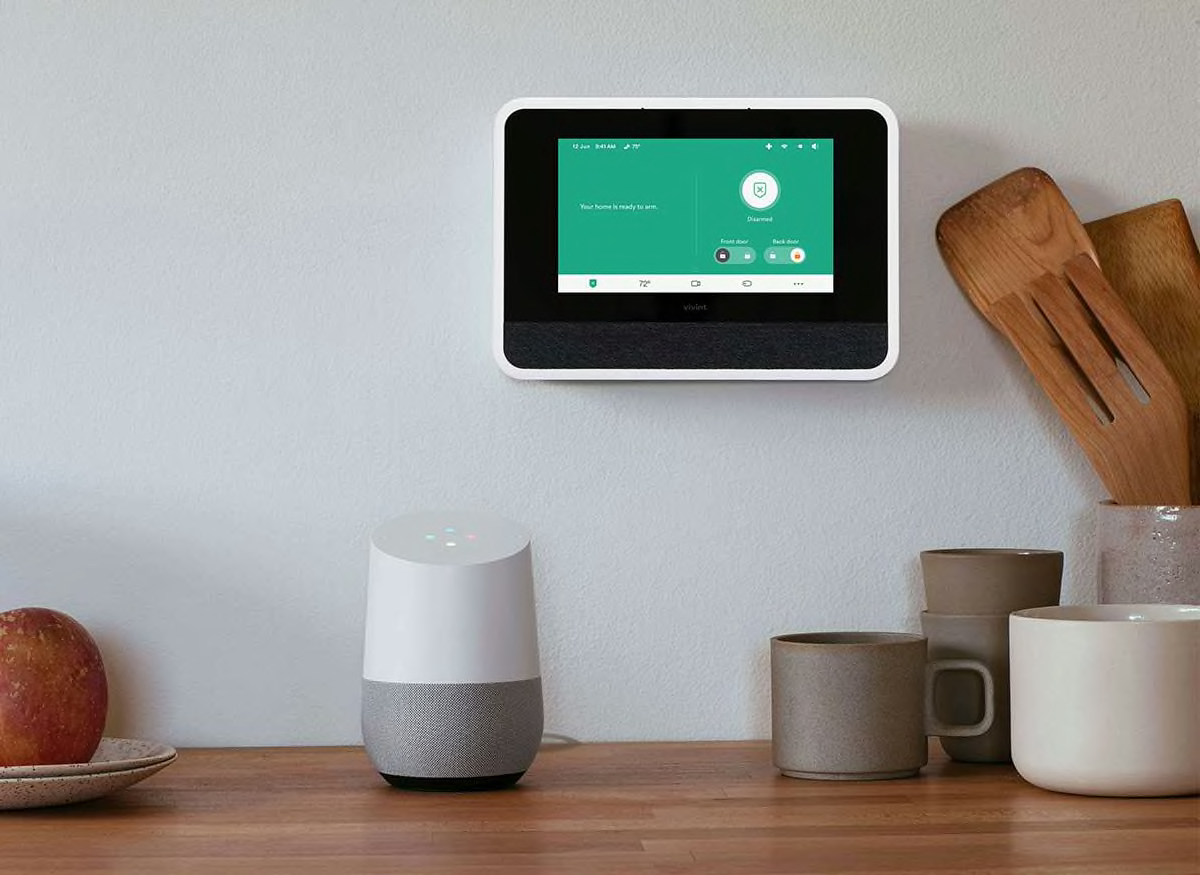
Voice Control
Many systems work with digital assistants—such as Amazon Alexa, Apple Siri, and Google Assistant—so you can arm and disarm your system using a simple voice command. You usually have to speak the disarm PIN code.
PHOTO: VIVINT SMART HOME
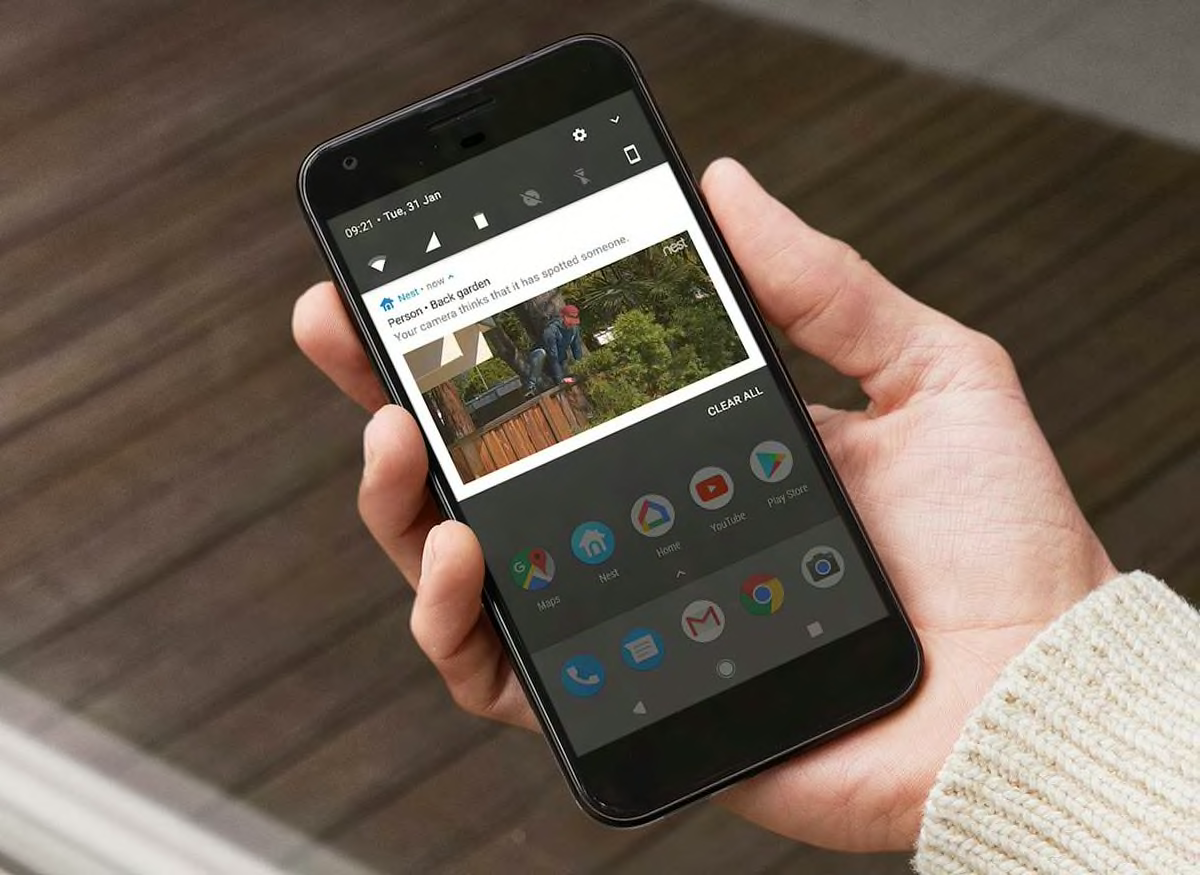
App Controls and Alerts
Most home security systems now come with a smartphone app, so you can remotely control the system and receive alerts when the alarm goes off.
PHOTO: NEST
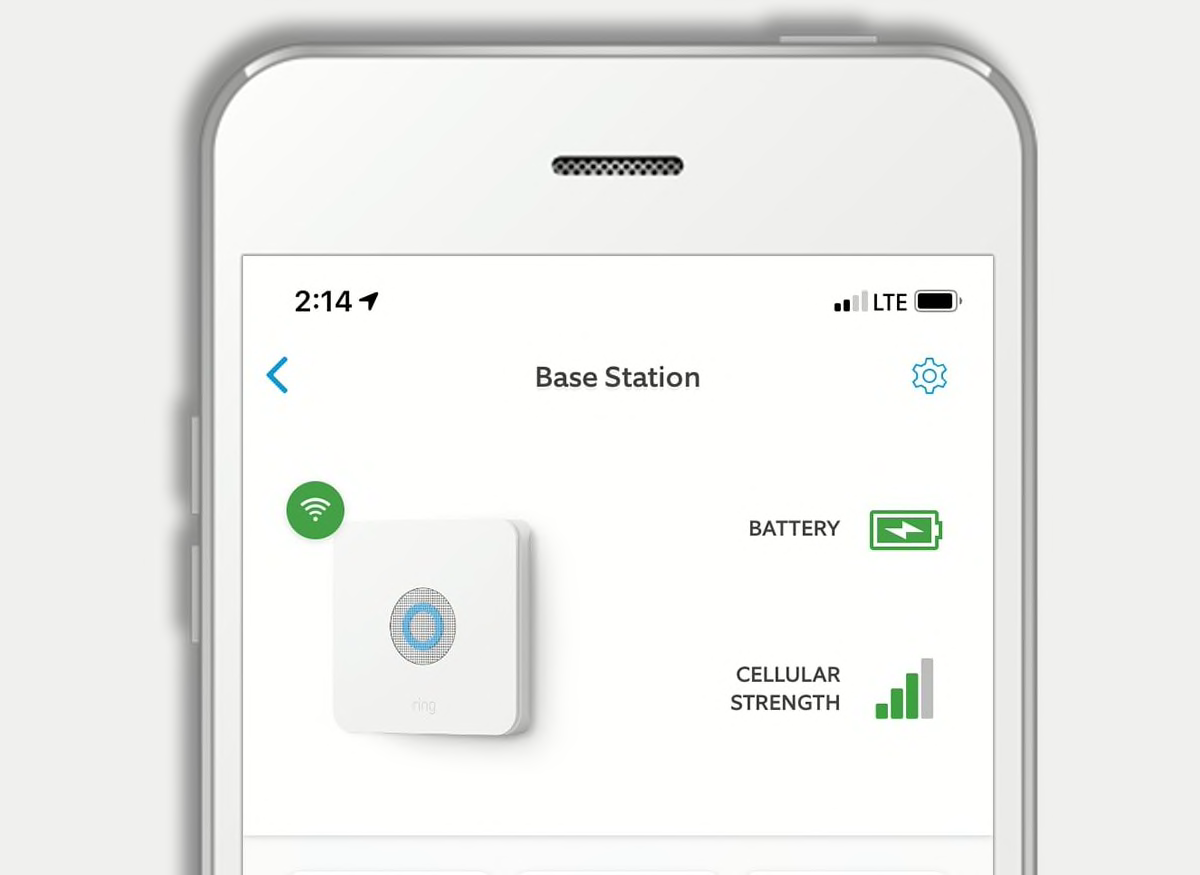
Battery Backup
Most systems offer a battery backup, which allows the system to continue working during a power outage.
PHOTO: RING
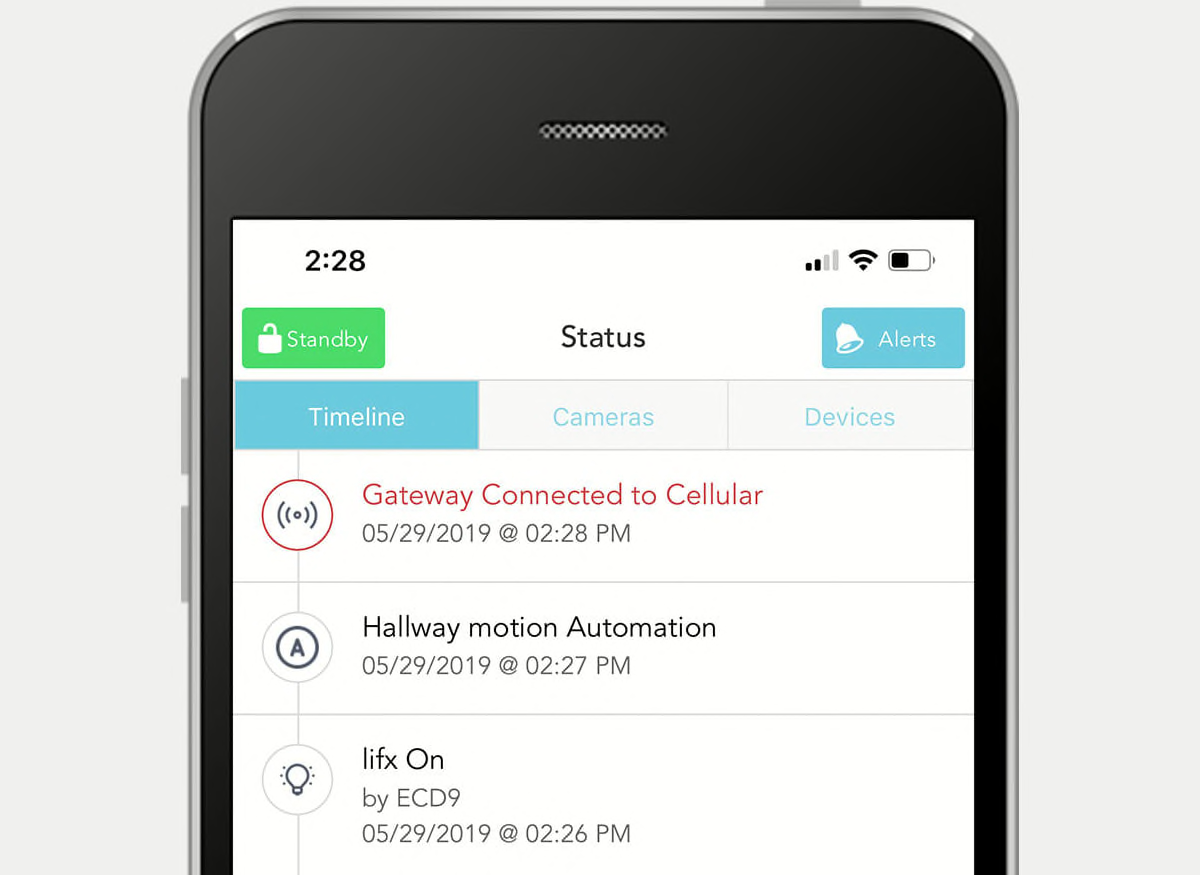
Cellular Backup
In addition to battery backups, most systems offer a cellular backup, so they can continue to function during power and/or internet outages. There is a monthly fee for cellular backup, but it’s usually built into the cost of professional monitoring.
PHOTO: ABODE

Duress Codes
Some security systems allow you to enter a duress code into the keypad or on the touch screen; the system will alert the authorities without setting off the siren.
PHOTO: ABODE
e911
If you’re out of town and get an alert that your alarm is going off, you can use e911 to call the local 911 dispatcher for your home, regardless of your current physical location. (If you call 911 from your phone and you’re not at home, you’ll reach the dispatcher where you are—not the one in your hometown.) This could save valuable time at a critical moment.
PHOTO: ARLO
Voice Control
Many systems work with digital assistants—such as Amazon Alexa, Apple Siri, and Google Assistant—so you can arm and disarm your system using a simple voice command. You usually have to speak the disarm PIN code.
PHOTO: VIVINT SMART HOME
App Controls and Alerts
Most home security systems now come with a smartphone app, so you can remotely control the system and receive alerts when the alarm goes off.
PHOTO: NEST
Battery Backup
Most systems offer a battery backup, which allows the system to continue working during a power outage.
PHOTO: RING
Cellular Backup
In addition to battery backups, most systems offer a cellular backup, so they can continue to function during power and/or internet outages. There is a monthly fee for cellular backup, but it’s usually built into the cost of professional monitoring.
PHOTO: ABODE
Duress Codes
Some security systems allow you to enter a duress code into the keypad or on the touch screen; the system will alert the authorities without setting off the siren.
PHOTO: ABODE







